Fusion of Your Great Toe Joint: What to Expect
Undergoing a fusion of the great toe joint is a significant procedure that can lead to a variety of changes in your foot's functionality and comfort.
The following two pictures are of xrays of a great toe joint that has arthritis and pain in it. Note the bone spur on the side and top of the big toe joint.


This patient wanted definitive treatment, not a joint replacement or other procedures. Fusion of the joint was offered and patient decided to pursue this. The next photo shows an xray of the same foot after surgery, surgical hardware in place on the great toe joint. There has been removal of cartilage and bone spurs from the joint.

Post-Surgery Expectations
- Reduced Pain: The primary goal of the surgery is to alleviate pain caused by arthritis or deformities. In fact, fusion of the great toe joint has one of the highest satisfaction rates of any foot and ankle surgery
- Stability and Strength: Fusion provides stability to the joint, potentially improving your ability to walk without discomfort.
- Limited Flexibility: Since the joint is fused, you will not be able to move it like before. This means no bending at the joint. But that is not all bad. More than likely, if you are needing this procedure, you probably already have very little movement to begin with
- Adjustment in Footwear: You may need to wear specific types of shoes, such as those with a rocker sole, to accommodate the change in foot mechanics. Incidently, you can try this type of shoe gear before you have the surgery. It may be enough to decrease your pain and not need the surgery.
- Resume Activities: Most patients can return to their favorite activities. If you like to hike, play tennis, golf, cycle, lift weights, etc, you likely will still be able to do those activities.
Recovery Timeline
Recovery time can vary, but typically involves:
- Initial Healing: Approximately 6 to 8 weeks for the bone to fuse properly. My patients are generally allowed to walk on the foot immediately after surgery in a walking boot.
- Full Recovery: It may take up to 3 to 6 months for complete recovery, including rehabilitation and adjustments. Swelling in the foot can take longer to resolve.
Long-term Considerations
You will likely be able to be more active, have little to no pain, be able to wear better shoes, and have a better quality of life. The greatest challenge is being able to do certain activities such as being on your knees and sitting on your heels, such as when you are gardening, or if you are a carpet layer, etc. High heeled shoes can also be challenging. To be able to wear high heels, the toe has to be fused in a higher position, which can then limit your ability to wear flatter shoes. These things need to be discussed before surgery.
Below are images of the same patient with an excellent great toe position who is painfree and able to be up on her toes. You can see that the toe lies flat when standing, and because there is still movement in the joint distal to the great toe joint, the patient can get up onto the toe very well. 

If you are experiencing pain in your great toe joint, for any reason, come see Dr. Biesinger at Centennial Foot and Ankle. You'll be glad you did.

